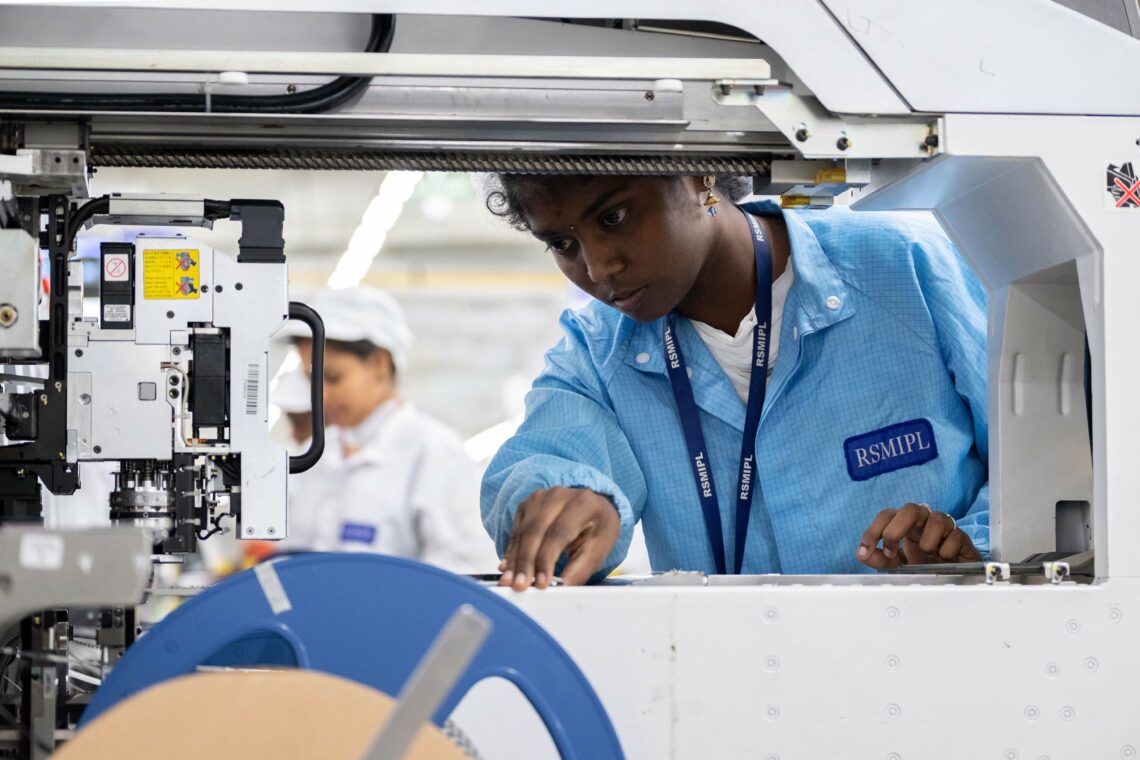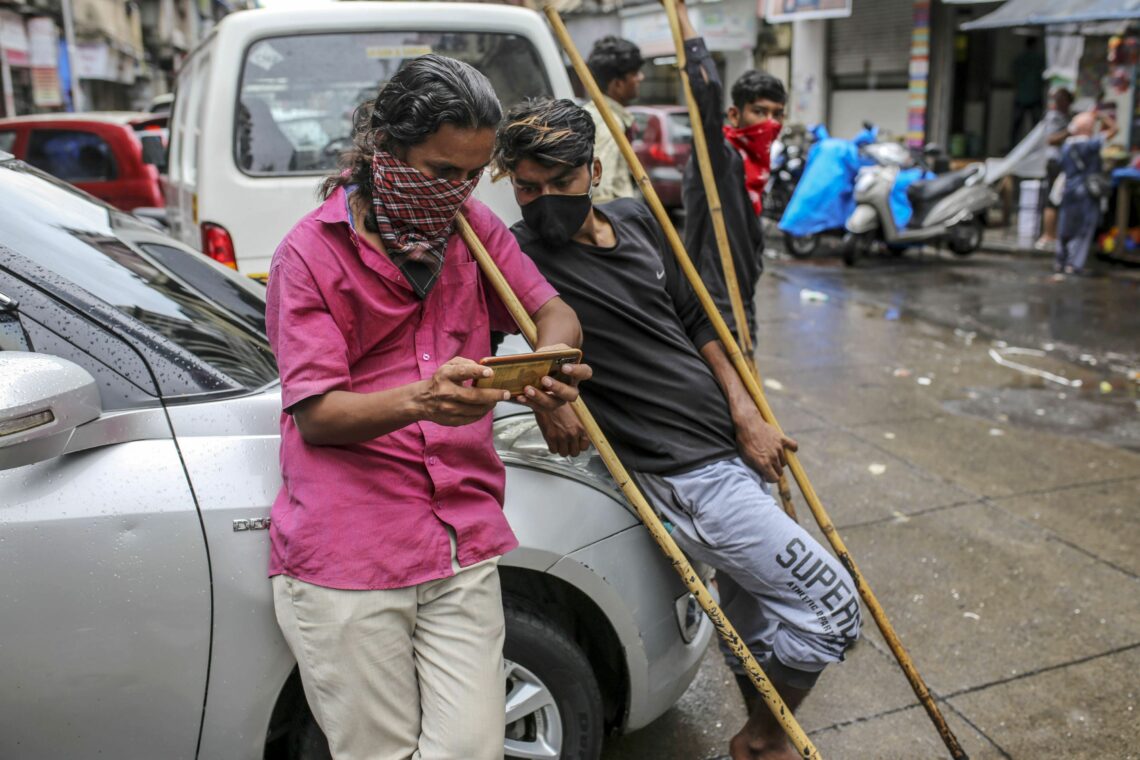Apple bets on India as an emerging manufacturing power
The Indian government has announced a new production-linked incentive scheme that could turn the country into a phone making hub. Apple and Samsung will now relocate part of their supply chains – a big step for India’s technology sector.

In a nutshell
- India's technology sector has lured phone making companies away from China
- Apple and Samsung will relocate part of their supply chains
- The country is poised to emerge as a leading manufacturer
The Narendra Modi government has persuaded 10 firms to use India as a mobile phone manufacturing and export hub. Half of them are affiliates of two of the world’s best-known brands, Apple and Samsung. If successful, the scheme would see India become the second largest mobile phone maker and exporter in the world in five years, and reduce its present dependence on Chinese imports. The more ambitious hope is that India will also develop an ecosystem of electronics components and design – a major gap in its economy.
Export policy
India has an undistinguished history of industrial policy. Nowhere has this been more obvious than in India’s technology sector. There is a new sense of urgency about this handicap as electronic devices have surged to become the country’s number one import. New Delhi also has security concerns about Chinese phones, which are currently ubiquitous. After the failure of an earlier import substitution-based electronics policy, last year the Indian government announced a new production-linked incentive (PLI) scheme that provided $5.3 billion in cash payments over five years to phone makers so long as they met certain production and export targets. In October, five foreign and five Indian firms signed up for the program.
Apple exports $500 million worth of phones from India. It has now promised to raise this a hundredfold.
The phone PLIs are the flagship initiative of a larger plan to increase electronics exports from $70 billion in 2019 to $400 billion in 2025. Half of this expansion would come from handsets, positioning India between China and Vietnam as the world’s second largest phone exporter. Unlike earlier schemes that targeted volumes and domestic sales, the new policy encourages companies to improve domestic value addition and exports.
Apple and Samsung used to have contractors, like Taiwanese firms Foxconn and Wistron, import parts and assemble phones for the Indian’s technology sector. Now they will relocate large chunks of their supply chain and have their suppliers make and export high-end mobile phones from India. Apple presently exports $500 million worth of phones from India. It has now promised to raise this a hundredfold – to at least $50 billion in five years. Its three main suppliers expect to invest $900 million for just the first year of the PLI scheme.
Apple core
India cannot compete against China and Vietnam on purely commercial grounds. An EY study argued that if the nonsubsidized cost of making a phone was $100, China and Vietnam could build a phone for $80 and $89 respectively, while India’s technology sector is not a real competition at $92-93 for a phone. The PLI scheme narrows this gap by $3 to $6. The remainder is being bridged by geopolitical risk. Apple Inc. has been on the lookout for an alternative to its China-based factory network as relations between the United States and China have deteriorated. Samsung has already moved much of its electronics manufacturing to Vietnam, but also wants a backup. India has positioned itself as the “plus one” site for such diversification plans.
Apple has been the prize catch. Recent cuts in corporate taxes, labor reforms, the PLI scheme and geopolitics have led Apple to look more favorably at manufacturing in India. Reports say the company plans to move 12 to 19 percent of its total phone production to India over the next five years. Even the lower figure would equal the total sales of mobile phones in India in 2019. Another draw are projections that say India will become a major center of mobile application development. Samsung has committed to making 120 million phones in India and exporting a third of them.

The Indian phone manufacturers who have signed up are eyeing the lower end of the market. Many of them have experience assembling phones for Chinese or European firms like Xiaomi and Nokia. But they will face a challenge while competing in overseas markets against well-positioned Chinese phone manufacturers. Among the clients they hope to net are U.S. telecom firms like Verizon, T-Mobile and AT&T, which have already come scouting for cheap phones to sell to their subscribers at home. The move was encouraged by Washington, which would prefer Americans to use non-Chinese phones.
Possible pitfalls
Unused to giving cash incentives on such a scale, New Delhi has been nervous about the PLI scheme. Officials fear firms may pocket the subsidies and, after a few years, pull the plug on operations. As prevention, New Delhi has given huge discretionary powers to an empowered committee of bureaucrats to oversee the rollout. However, the committee, in theory, can refuse to provide a firm its subsidy without any reason and the company will have no recourse to appeal the decision. This adds another layer of risk to India’s ever-changing regulatory and tax environment, a major source of frustration for investors. Wistron, used to a more passive workforce in China, has experienced its first bout of labor unrest at its nascent Indian plant.
Indian officials privately admit the PLI rules were skewed to ensure no Chinese applicant would be eligible.
Another risk is retaliation by China. Indian officials privately admit the PLI rules were skewed to ensure no Chinese applicant would be eligible. The fact Chinese competitors like Huawei and Xiaomi are being slowly pushed out of India is one of the attractions for the likes of Apple and Samsung. However, no phone facility can escape using hundreds of Chinese components for decades to come, therefore remaining vulnerable to downturns in Sino-Indian relations. Apple moved nine plants to India during the pandemic, but still has over 300 in China.
A final question is India’s continuing inability to conclude trade agreements. The entire PLI scheme rests on “Made in India” products being able to find ready markets overseas. India’s technology sector has done little to secure a market for its exports in case the global trading regime starts to crack.
Scenarios
The strong favorable response to the PLI scheme and the policy convergence between Cupertino and New Delhi augurs well for India. Even if some smaller firms fall by the wayside, the country seems set to emerge as one of the world’s largest makers of mobile phones and, more importantly, phone components in the next five years.
Worst-case scenario
If anything were to go wrong, it would most likely happen on the domestic front. Nokia once had its largest global phone making facility in India before taxation issues helped precipitate its closure. India features no shortage of pitfalls for factory owners, including multiple independent regulators, battles between state and central governments and strong populist streaks. It would take only one major issue to make these new investments unviable given the slender competitive advantage India has over other Asian countries. But given how much Prime Minister Modi has invested in the policy, New Delhi will bend over backward to ensure it succeeds.
Best-case scenario
The best scenario would be the PLI scheme proving to be the secret sauce that throws India’s laggard manufacturing sector into overdrive. Enthused by the phone makers’ response, the government has announced similar incentive policies for other electronic devices and 19 other industrial sectors. Some of them mimic the phone scheme with cash doled out in lockstep with export shipments. Daimler, for example, has expressed interest in a program for commercial vehicles. Other initiatives try to leverage large domestic demand by imposing trade barriers – for example, solar cells and modules, television sets and air-conditioners. Samsung has shifted television panel manufacturing to India as a consequence, but they will not be export-competitive. Though New Delhi has announced sunset clauses for these protectionist actions, businesses remain skeptical.
Despite a gloomy world economy, India’s FDI flows jumped by 18 percent this year thanks to aggressive economic reforms and concerns about China. If capital flows continue and exports grow, these could accelerate recent positive trends in Indian manufacturing, including a nearly one-third rise in manufacturing total factor productivity since 2011 and an 8 percent increase in foreign value-added content in India’s total global value chain trade between 2005 and 2014. Mr. Modi has signaled that he wants investors to see India not as just an alternative to China. He asserted in an interview that “India will become a global manufacturing hub on its own strengths.”







